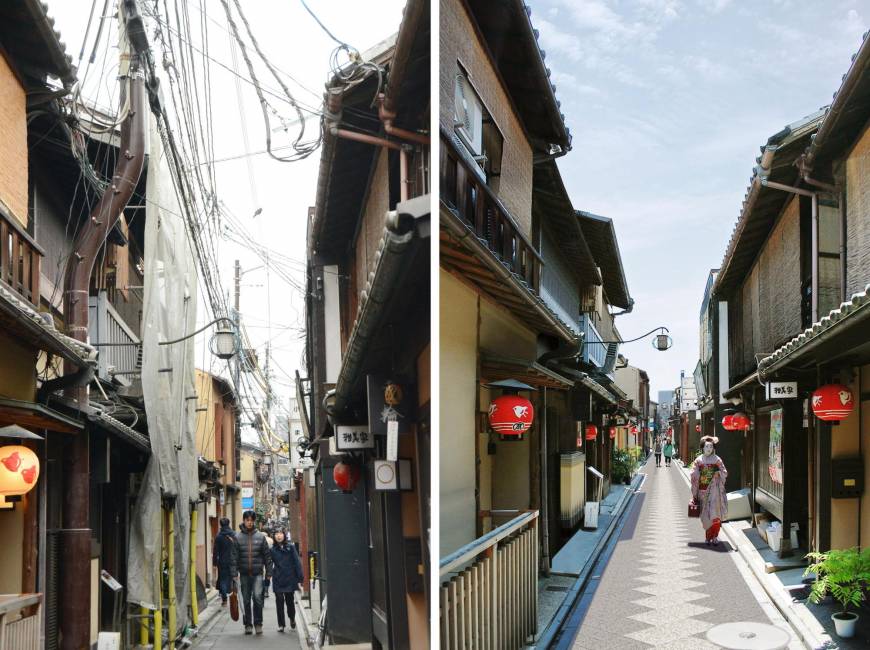
In the past twenty years Pontocho has changed out of all recognition. Now it is packed with tourists, English menus are everywhere, and there are shops which cater even to budget travellers. Needless to say, a hundred years ago things were quite different, as Lafcadio Hearn here makes plain when he came on a visit in 1891. At 400 words the passage is a little long for the WiK Writing Competition (deadline March 1), but I have no doubt if he cut it down a bit he’d be a worthy winner for his fine evocation of a distinctly Kyoto atmosphere!
“Seen at night the street is one of the queerest in the world. It is narrow as a gangway; and the dark shining wood – work of the house-fronts, all tightly closed,-each having a tiny sliding door with paper-panes that look just like frosted glass, – makes you think of first-class passenger-cabins. Really the buildings are several stories high; but you do not observe this at once – especially if there be no moon – because only the lower stories are illuminated up to their awnings, above which all is darkness. The illumination is made by lamps behind the narrow paper-paned doors, and by the paper-lanterns hanging outside-one at every door. You look down the street between two lines of these lanterns-lines converging far-off into one motionless bar of yellow light. Some of the lanterns are egg-shaped, some cylindrical; others four-sided or six-sided; and Japanese characters are beautifully written upon them.
The street is very quiet – silent as a display of cabinet-work in some great exhibition after closing-time. This is because the inmates are mostly away-attending banquets and other festivities. Their life is of the night. The legend upon the first lantern to the left as you go south is “Kinoya: uchi O-Kata”; and that means The House of Gold wherein O-Kata dwells. The lantern to the right tells of the House of Nishimura, and of a girl Miyotsuru-which name signifies The Stork Magnificently Existing. Next upon the left comes the House of Kajita; – and in that house are Kohana, the Flower-Bud, and Hinako, whose face is pretty as the face of a doll. Opposite is the House Nagaye, wherein live Kimika and Kimiko…. And this luminous double litany of names is half-a-mile long.
The inscription on the lantern of the last-named house reveals the relationship between Kimika and Kimiko – and yet something more; for Kimiko is styled “Ni-dai-me,” an honorary untranslatable title which signifies that she is only Kimiko No. 2. Kimika is the teacher and mistress: she has educated two geisha, both named, or rather renamed by her, Kimiko; and this use of the same name twice is proof positive that the first Kimiko – “Ichi-dai-me” – must have been celebrated. The professional appellation borne by an unlucky or unsuccessful geisha is never given to her successor.”
(from “Works of Lafcadio Hearn“. You can read it for free at: http://a.co/5hHbRMP
